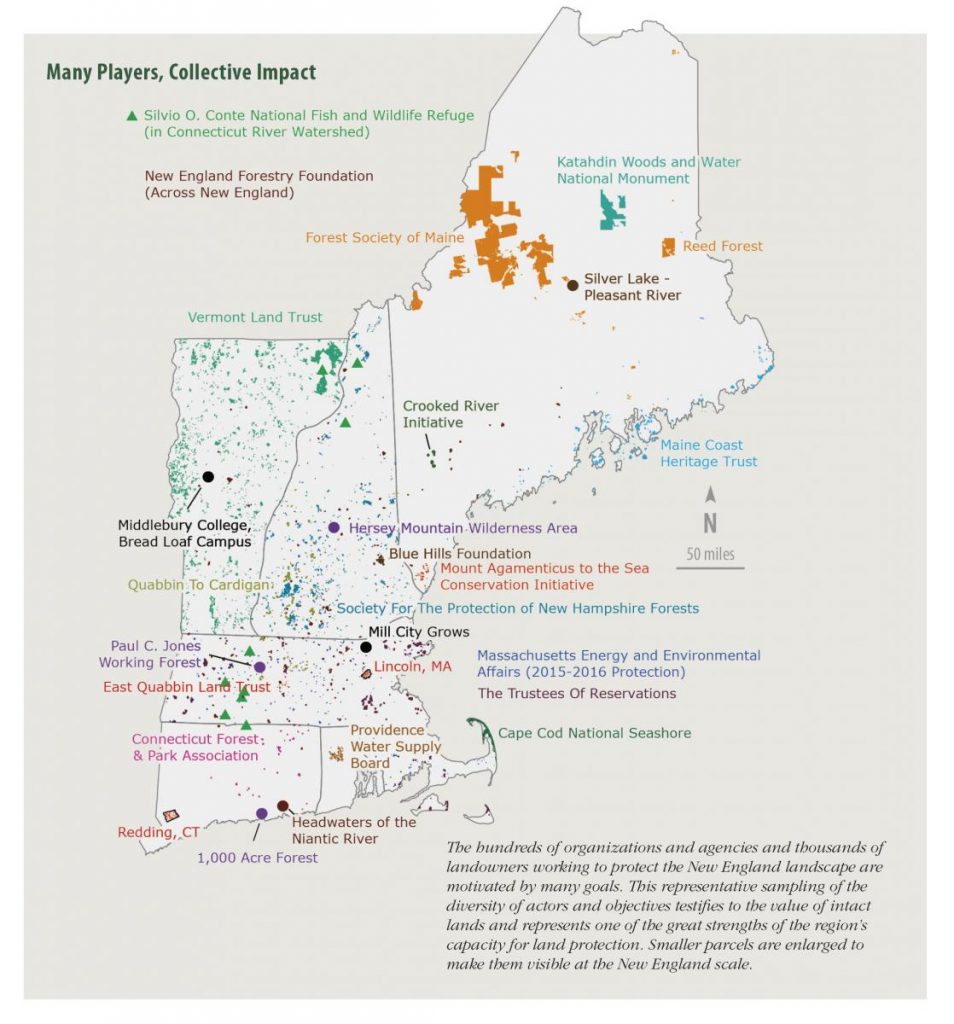Permanently protecting land from development and managing it less intensively are the best ways to protect the ecosystems and natural resources that make our world more resilient to climate change and ensure that we can continue to enjoy the valuable social, health, environmental, and economic benefits that the land uniquely provides. While permanent, voluntary land protection is a singular strategy, its achievement requires coordinated, multi-dimensional collaboration. We’ve made land protection a priority since we originally purchased our land in Redding, Connecticut over three decades ago. Today, we support a vast network of partners throughout the Northeast, helping them harness capacity and focus their impact to accelerate the pace and scale of land protection throughout the region.
Complex patterns
The story of the land in the Northeast starts well before the European arrival and subsequent colonization. Land tenure and rights shifted dramatically during this period, which was marked by violence, oppression, and the forceful displacement of the land’s original inhabitants. European settlement in the 17th and 18th centuries initiated the shift to private landowner rights, displacing the collective rights approach of the indigenous people. After this period of settlement, the ownership and protection patterns across New England became more varied, if flawed.
Today, forests and farms are owned by individuals, families, nonprofit organizations, corporations, and municipal, state and federal jurisdictions, as well in a limited way by some surviving Native American tribes. And while countless small parcels are typical of the southern New England landscape, larger properties are more prevalent in the north. We at Highstead recognize the injustice of the land’s history, the complexities of current land ownership patterns, and respond by working in collaboration with a diverse set of partners throughout the region to address local values and landowners’ goals while overcoming the unique challenges they face as they seek to protect parcels of land through conservation easements and acquisitions.
Regional progress
Across the region, 26 percent of forestland and 12 percent of farmland in New England are currently protected from development. Sixteen percent of forestland that is protected from development is managed as wildlands meaning that it is also protected from timber harvesting and other management. Since 1990, the rate of land protection has greatly outpaced that of every previous period, with an average of 180,000 acres of land protected from development per year. During this period, we’ve seen a growing diversity of participants and approaches as more private owners have conserved their own land and as the use of permanent conservation easements is increasingly seen as a cost-effective, reliable tool for land protection.
A call to action
We advocate for land protection not in opposition to all development and management but rather in recognition that land is a finite resource that requires careful planning, protection and stewardship. To reach the goals outlined by the Wildlands & Woodlands vision, we must change the way we plan and develop the region’s infrastructure so that our rural, suburban, and urban communities can continue to benefit from the many resources that our forests and farmlands provide all of us.
